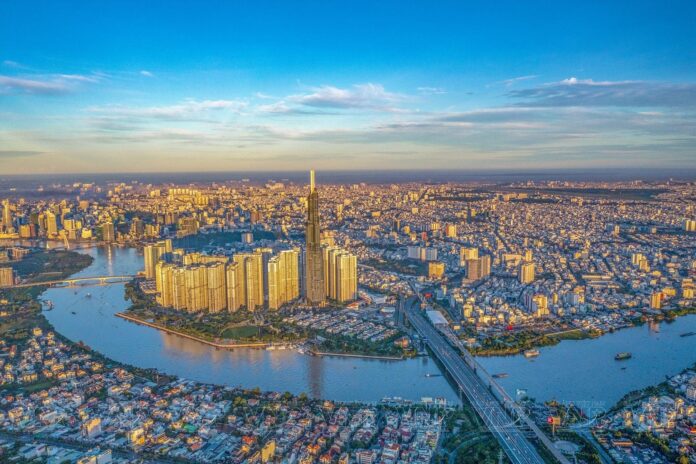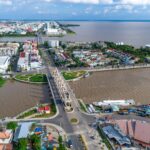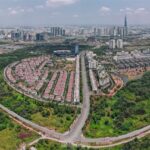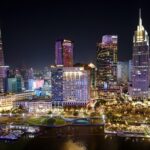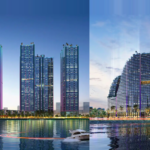Ho Chi Minh City to Become a “Global Metropolitan City” in Southeast Asia
According to the plan to rearrange administrative units, Ba Ria – Vung Tau Province, Binh Duong Province, and Ho Chi Minh City will be consolidated, taking the name Ho Chi Minh City. The political and administrative center will be located at 86 Le Thanh Ton Street, in the current Ho Chi Minh City. The new Ho Chi Minh City will have a natural area of 6,772.59 km2 and a population of 13,706,632 people.
It is known that Ho Chi Minh City, Ba Ria – Vung Tau Province, and Binh Duong Province are all home to leading institutional and digital governance foundations in the country.
In 2024, Ho Chi Minh City ranked 2nd in the Digital Transformation Index, Binh Duong ranked 7th, and Ba Ria – Vung Tau ranked 2nd in administrative reform and 5th in PCI. Binh Duong is also among the top 3 localities with the most effective implementation of free trade agreements and 5th in the country in the Green Index.
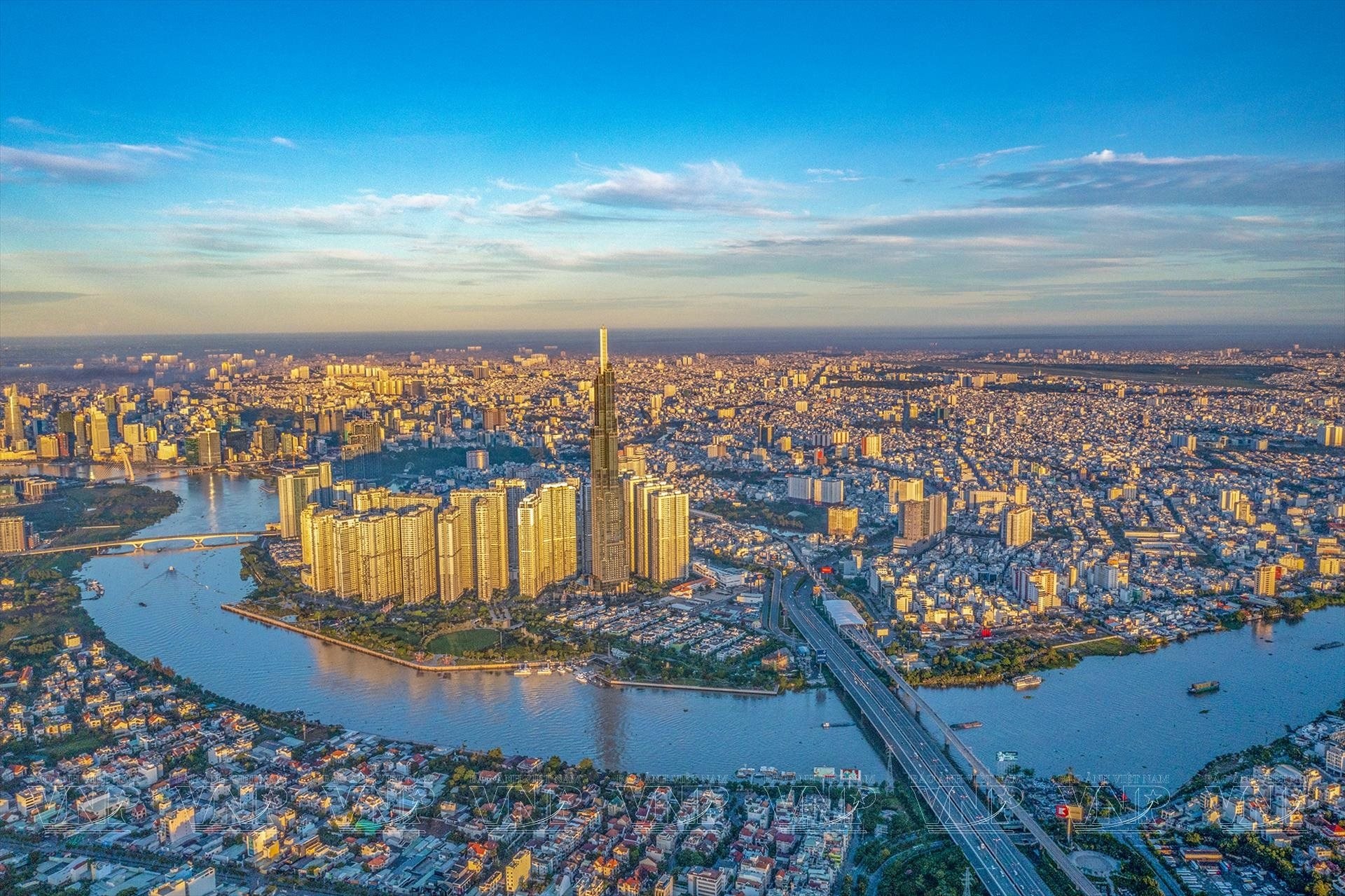
Despite notable achievements, in reality, and in the long term, the development process of each locality has revealed some bottlenecks, leading to a lack of sustainable growth. Investment efficiency has not matched the potential, while international competitiveness remains limited and needs to be strongly improved in the coming time.
According to General Secretary To Lam, the consolidation of Ho Chi Minh City with Ba Ria – Vung Tau and Binh Duong marks a turning point in the history of urban development in Vietnam. This is a comprehensive reconfiguration of the development space, where the three most dynamic economic centers in the country converge to form a super metropolis of finance, industry, and seaport.
The new Ho Chi Minh City aims to become a “global metropolitan city” in Southeast Asia – a smart, green, and creative city, outstanding not only for its economic strength but also for its rich culture, arts, sports, entertainment, and modern, dynamic lifestyle.
The city will develop into a regional-scale center of finance, commerce, logistics, high-tech industry, and sea tourism based on digital technology, green economy, environmental sustainability, social harmony, and connectivity. Ho Chi Minh City (new) aspires to become an attractive destination for talented individuals, creatives, and entrepreneurs from Vietnam and abroad; a place conducive to startups, innovation, incubating new trends, and advanced models.
Not only is it the economic locomotive of the whole country, but Ho Chi Minh City also aims to become a modern metropolis with influence in the global city network.

Cai Mep – Thi Vai port cluster can accommodate large vessels.
The General Secretary emphasized that developing a regional-level international financial center in Thu Thiem will contribute to attracting global capital and enhancing Vietnam’s position on the world financial map.
Additionally, there is an orientation to form a chain of smart cities connecting Ho Chi Minh City – Di An – Thuan An – Thu Dau Mot – Ben Cat – Phu My – Ba Ria – Vung Tau; developing an innovation corridor from Ho Chi Minh City’s Creative Eastern City (Thu Duc City) to industrial-service-seaport poles such as Di An, Ben Cat, Phu My, Ba Ria, and Vung Tau.
Developing a smart port-logistics cluster at Cai Mep – Thi Vai – Can Gio based on a super-port model operated by big data; while building a high-end eco-tourism center in Vung Tau – Can Gio, aiming to become an international green and smart destination, balancing conservation and development.
A New Strategy for Vietnam’s Most Modern Metropolis
The new Ho Chi Minh City will be an urban regional ecosystem with a multi-center structure, operating according to economic, functional, and value chain logic. Each development pole, from Thu Thiem and Thu Duc to Di An, Ben Cat, Phu My, Ba Ria, and Vung Tau, must be planned as an organic link, complementing each other’s functions, intelligently connected, flexibly coordinated, and sharing benefits in a harmonious whole.
The General Secretary suggested promoting the construction of a science and technology, innovation, and private economic ecosystem. Besides being an economic center, the city must become a livable place where every citizen is ensured opportunities for development and provided with adequate healthcare, education, living environment, and safety.

Binh Duong is the industrial capital of Vietnam.
The new city needs to strongly invest in healthcare, education, community health care, and the comprehensive development of physical and intellectual aspects of the younger generation. At the same time, it is essential to ensure social security and leave no one behind in the development process; prioritize bridging the development gap between areas, especially newly merged areas and less developed regions.
The General Secretary emphasized that a consistent requirement is to selectively inherit and integrate effective policies from each locality after the merger. Human development must go hand in hand with ensuring solid social security, safety, national defense, and security. All development policies should embody the view that prosperity is not just about economic growth but also about building a safe, equitable, and happy society for all citizens.
Pouring $7 Billion into Ho Chi Minh City’s International Financial Center
The heart of Ho Chi Minh City’s International Financial Center is situated in the Thu Thiem New Urban Area, spanning 9.2 hectares. This area will be home to the offices of management, supervisory, and judicial bodies in its initial phase, with estimated investment costs totaling VND 172,000 billion (equivalent to USD 7 billion).
The Mega-Metropolis: Merging into a Super-City with Bà Rịa – Vũng Tàu, Bình Dương and Ho Chi Minh City
“This morning, General Secretary To Lam and Prime Minister Pham Minh Chinh, along with a delegation of central officials, held a working session with the Standing Committee of the Ho Chi Minh City Party Committee, Ba Ria – Vung Tau Provincial Party Committee, and Binh Duong Provincial Party Committee.”
The Magic of Municipal Mergers: Unveiling the 168 New Wards of Ho Chi Minh City
The city of Ho Chi Minh, a bustling metropolis, has undergone a transformation, resulting in a streamlined structure of 168 administrative units at the commune level. This includes 113 wards, 54 communes, and one special administrative region, each playing a vital role in the city’s vibrant tapestry.
Unlocking Legal Hurdles: Ho Chi Minh City Fast-Tracks Sunshine Group’s Twin High-Rise Projects
The Ho Chi Minh City real estate market is showing clear signs of recovery, with key projects being unblocked, notably the two luxury apartment complexes by Sunshine Group in South Saigon. This marks a significant shift in governance thinking, supporting businesses in their development and contributing to state revenues.


























